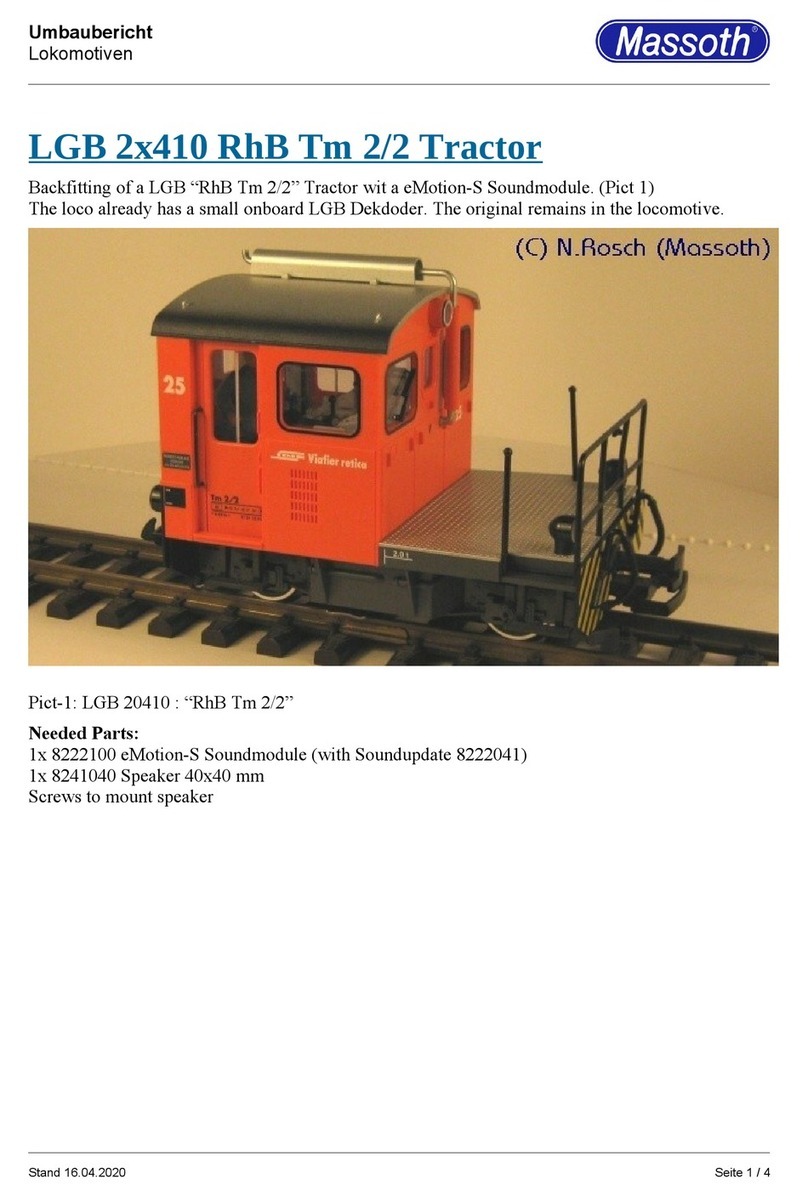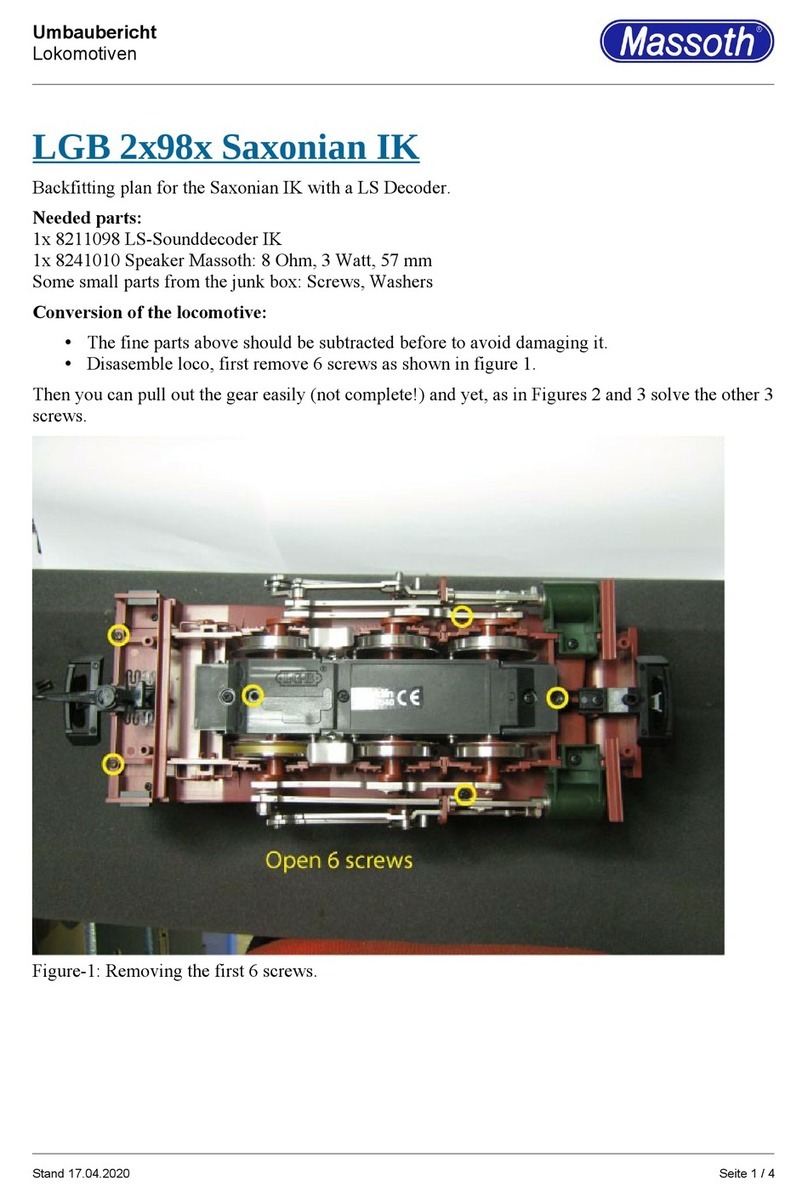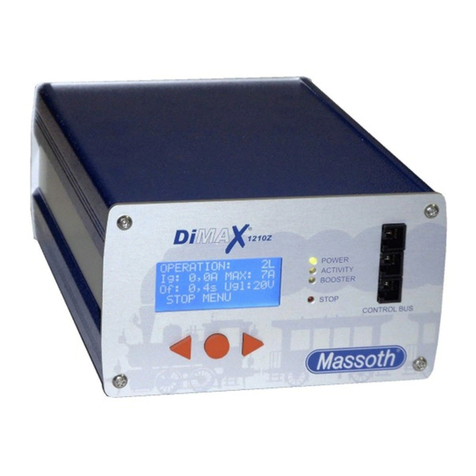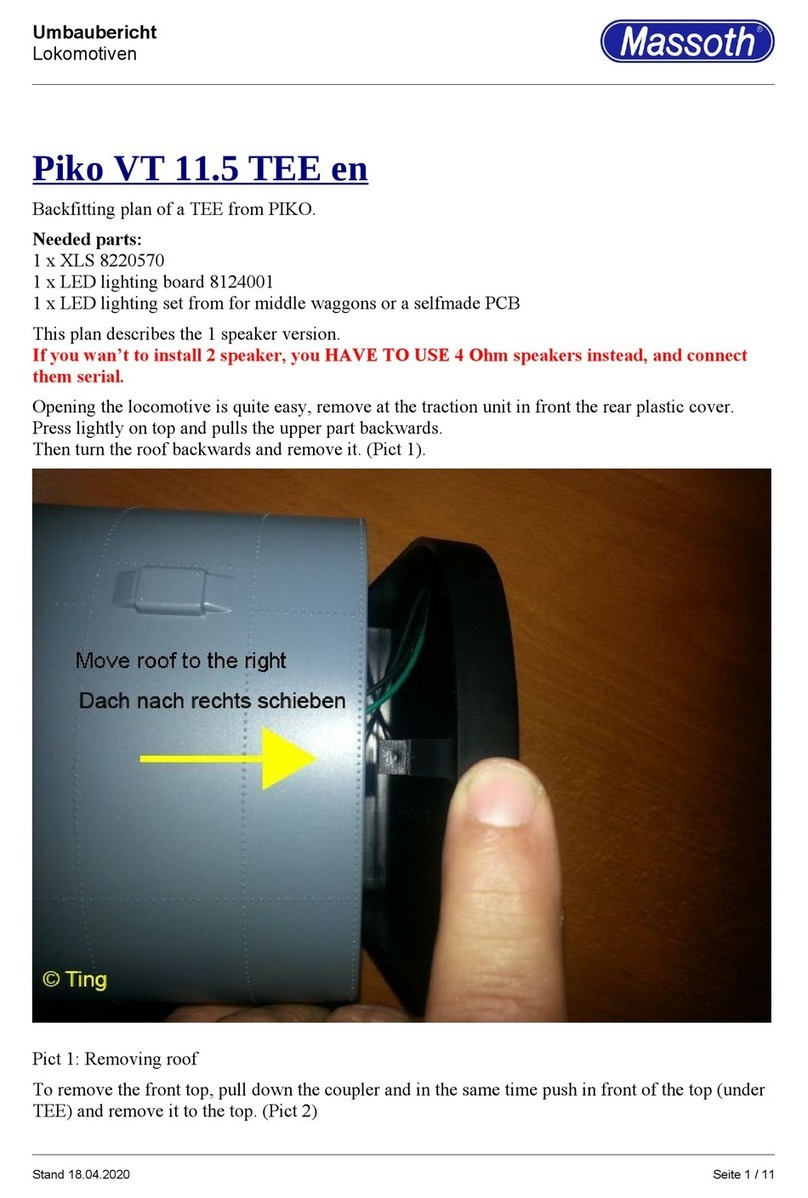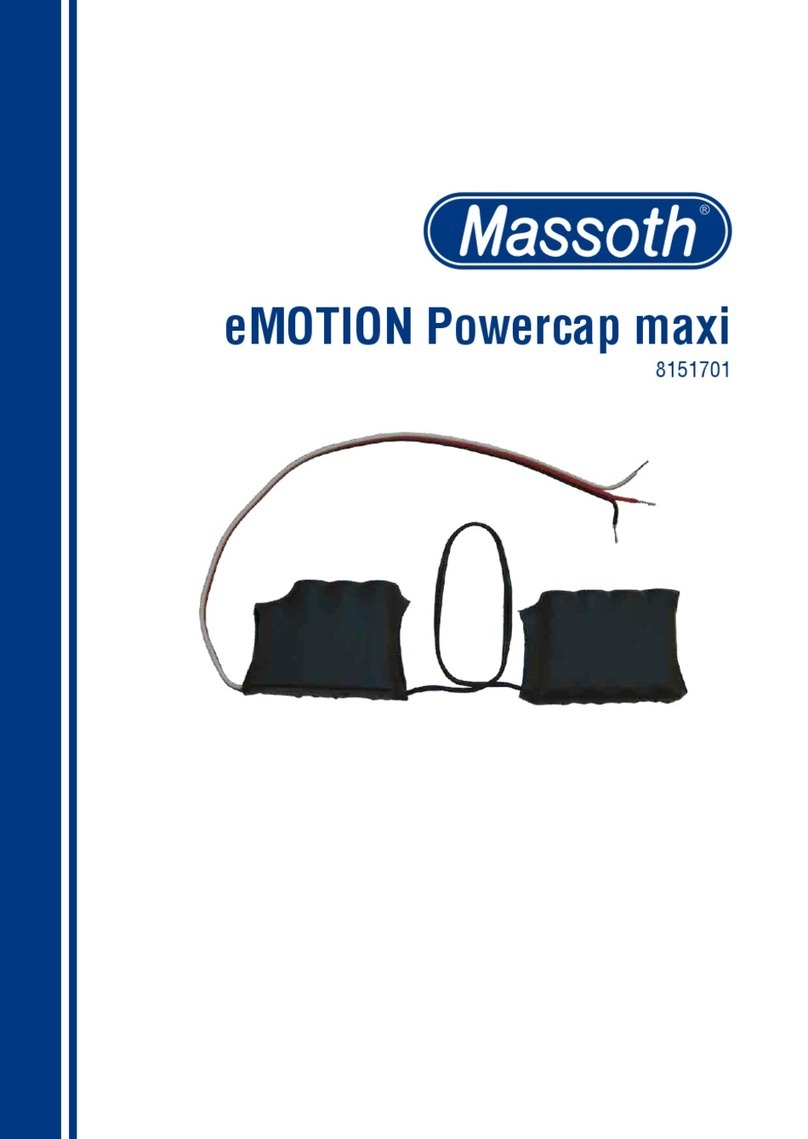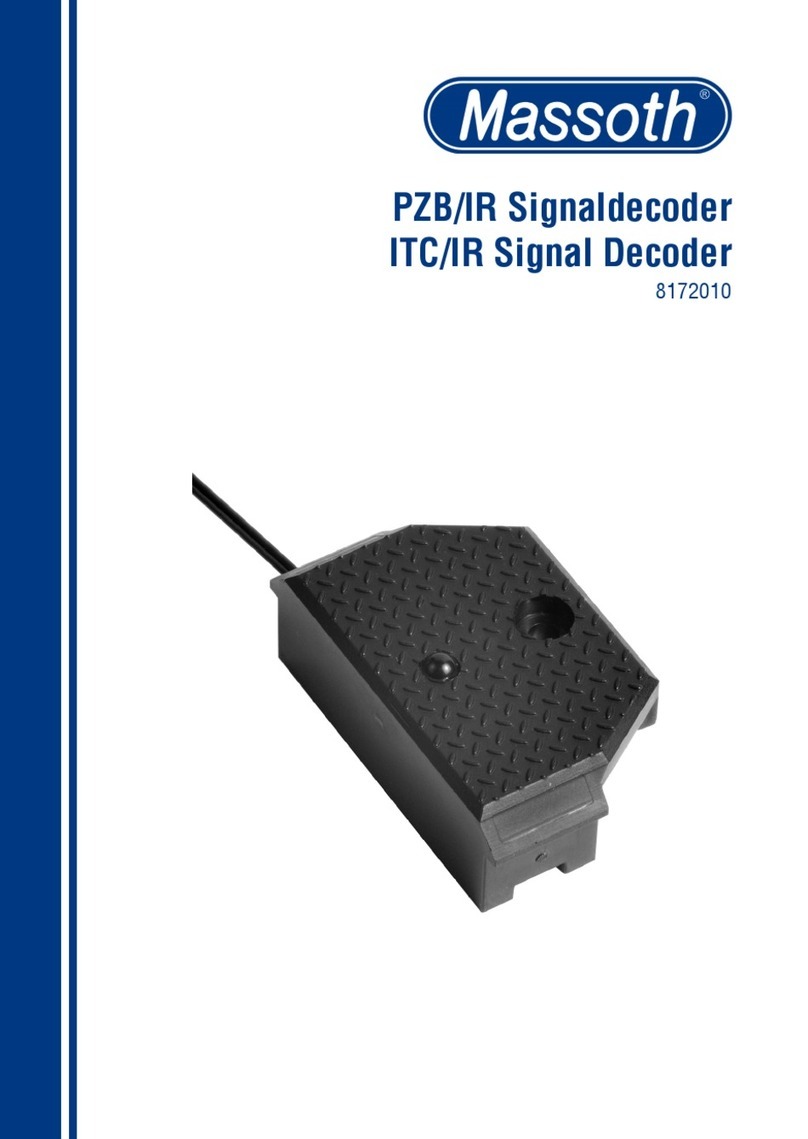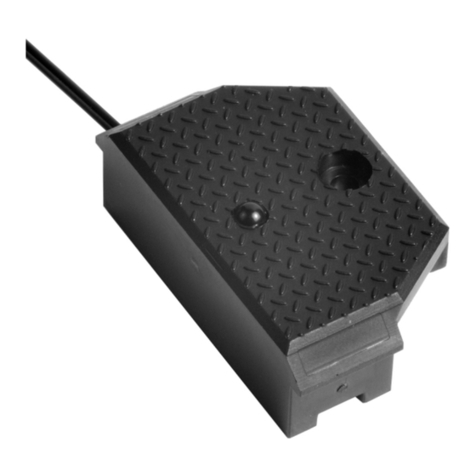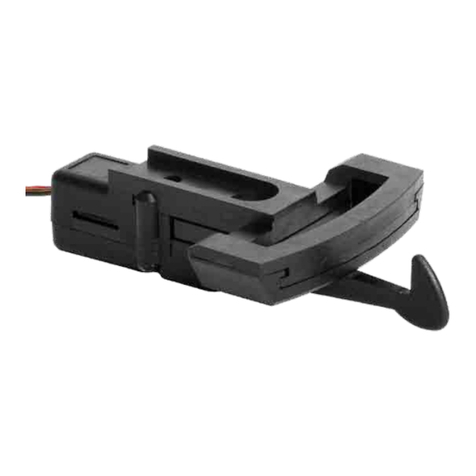
2
1. Allgemeines
Die Massoth Rangierkupplung 2.0
entkuppelt einen angehängten Zug
oder Wagen bequem per Knopf-
druck. Wir empfehlen, die Produkt-
dokumentation und Warnhinweise
vor der Montage und Inbetriebnah-
me unbedingt gründlich zu lesen
und diese zu beachten. Sollten sie
zu Technik und Einbau über diese
Anleitung hinausgehende Fragen
haben, kontaktieren sie bitte die
Hotline.
1.1 Warnhinweise
•Dieses Produkt ist kein Spielzeug.
•Verbinden sie das beiliegende
Kabel mit dem Steckkontakt auf Ih-
rem Decoder oder sorgfältig nach
dem Anschlussplan (Kapitel 3)
oder für echten DCC-Betrieb direkt
mit dem Digitalgleis (Kapitel 4).
•Werden beim Anschließen Kabel
vertauscht oder Kabel verschie-
dener Funktionen (z.B. Eingänge
und Ausgänge) kurzgeschlossen,
wird die Elektronik zerstört.
•Das Bauteil darf nur an Garten-
bahnfahrzeuge mit den dort üb-
lichen Spannungen angeschlossen
werden. Ein Anschluss an andere
Geräte kann zur Zerstörung führen.
•Verwenden sie das Produkt nicht
ohne Beaufsichtigung.
1. General Information
The Massoth Switching Coupler
2.0 conveniently detaches a train
or car at the push of a button.
We recommend that you read
this product documentation and
the warnings thoroughly before
installation and operating. If you
have any questions about the
technology and installation that go
beyond these instructions, please
contact the hotline.
1.1 Warning Notes
•This product is not a toy!
•Connect the enclosed cable with
the plug contact on your decoder
or carefully according to the
connection diagram (chapter 3) or
for real DCC operation directly with
the digital track (chapter 4).
•If cables are mixed up during
connection or cables with different
functions (e.g. inputs and outputs)
are short-circuited, the electronics
will be destroyed.
•The component may only be con-
nected to garden railway vehicles
with the usual voltages there.
Connection to other devices can
lead to destruction.
•Do not use the product without
supervision.
